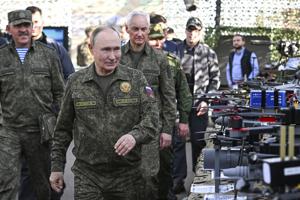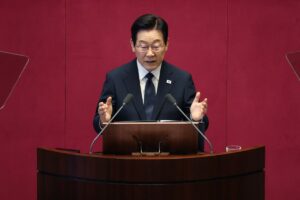
Recent incursions into NATO airspace attributed to Russia have reached alarming levels, raising concerns about the Kremlin’s intentions. In September 2023, approximately 20 Russian drones entered Polish airspace, prompting NATO to respond by deploying jets to intercept them. This incident is significant as it marks the first direct military engagement between NATO and Russia since the latter’s invasion of Ukraine in February 2022.
The escalating violations come against the backdrop of Russia’s ongoing military operations in Ukraine. In addition to the drone incursions, Russia has also been reported to violate Estonian airspace, with Russian fighter jets allegedly remaining there for around 12 minutes. Estonia’s Foreign Minister described this action as “unprecedently brazen.” Russia has denied these allegations, claiming they did not occur. Other NATO members, including Romania and Latvia, have also reported similar incidents this month.
The motivations behind these incursions remain a focal point for analysts. Before the invasion of Ukraine, the Kremlin had demanded that NATO halt its expansion and prevent Ukraine from joining the alliance. NATO rejected these demands, leading to increased tensions. Russian President Vladimir Putin has warned that any military action by NATO in support of Ukraine could provoke a direct conflict, a notion that carries significant risk for all parties involved.
Some experts suggest that these airspace violations may be part of a broader strategy by Russia to test NATO’s resolve and response capabilities. Estonian Defense Minister Hanno Pevkur noted that Russia may be attempting to divert NATO resources from supporting Ukraine to defending its own borders. This could potentially weaken the alliance’s support for Ukraine amid ongoing hostilities.
In discussing Russia’s tactics, Mark Galeotti, a prominent expert in Russian politics, described the incursions as “coercive signaling.” He posited that the Kremlin aims to discourage NATO members from providing robust security guarantees to Ukraine. This tactic seeks to instill doubt among NATO allies regarding their collective commitment to mutual defense in the face of Russian aggression.
Edward Lucas, a senior fellow at the Center for European Policy Analysis, indicated that Russia’s strategy might involve highlighting NATO’s weaknesses to foster skepticism about the alliance’s willingness to engage in military action on behalf of its Baltic members. He stated that “Russia does not need to defeat NATO militarily if it can defeat it politically.”
The reaction from NATO and the United States has been closely monitored. Following the drone incident in Poland, NATO initiated discussions to strengthen air defenses across its eastern flank. The alliance has reaffirmed its commitment to collective defense, with Polish Prime Minister Donald Tusk stating that the country would “without discussion” shoot down any object that enters its airspace.
While NATO Secretary-General Mark Rutte emphasized that decisions regarding military responses would depend on the threat level posed by intruding aircraft, the overall unity of the alliance remains uncertain. U.S. President Donald Trump initially suggested the drone intrusion might have been a mistake but later indicated support for NATO’s right to defend itself against such incursions.
As these incidents unfold, the implications for NATO’s strategic posture and its relationship with Russia will likely continue to evolve. The situation underscores the delicate balance of power in the region and the ongoing complexities of international relations in the face of military aggression.







